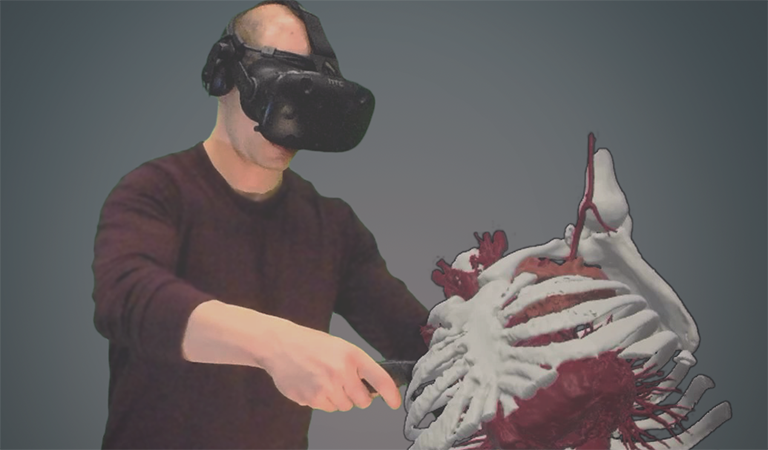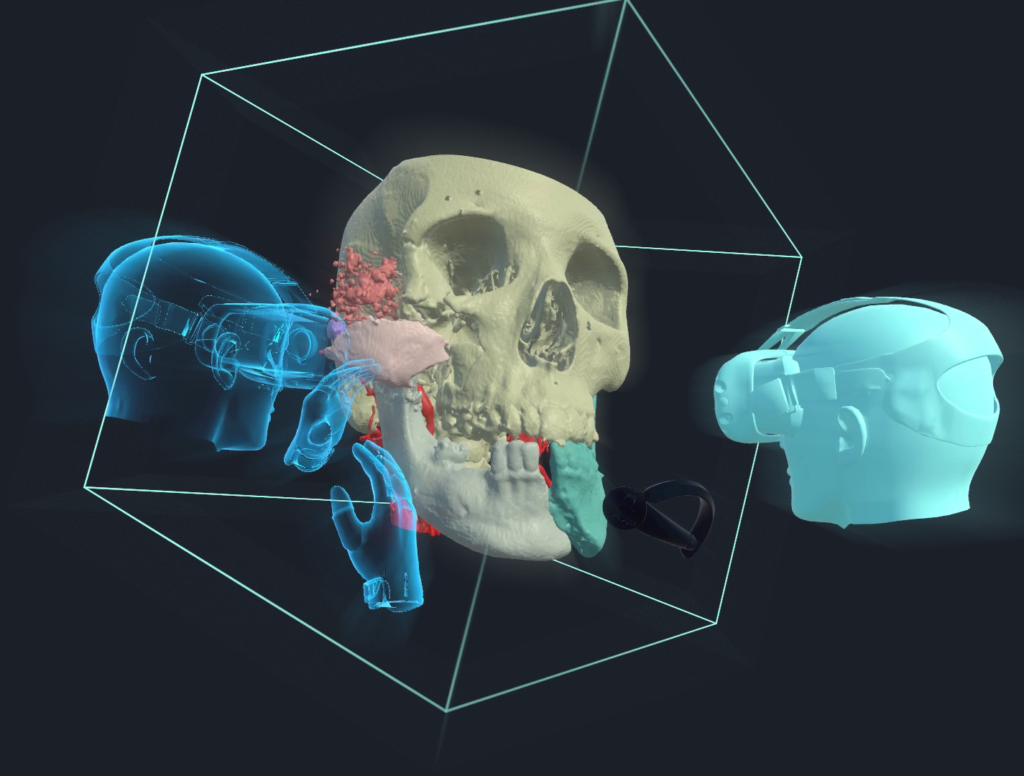The company hopes that surgeons and other physicians will use the platform to share and experience medical files. One could see how an immersive environment could really aid in surgical planning. Rather than doctors simply imagining a procedure based on the slices of an MRI or CT, more realistic VR models could elicit better understanding. It would also be possible for physicians to collaborate across borders, with a remote technician in India aiding a U.S. surgery to reduce costs. A remote site could aid in understanding a specific pathology with specific knowledge.
The ability to see relevant scans for a complex procedure in VR could allow a patient to really understand their issue and the operation. In a competitive medical field, hospitals and surgeries could win clients by giving them better choices. A more informed choice made by a patient who has a better grasp of the options could aid medical efficacy and overall contentment.

Many CTs and MRIs are shared on compact disks or through cumbersome file exchange programs. As a patient, I don’t have access to the sum total of my medical information. Different doctors maintain portions of my medical info in a piecemeal fashion, as well. The whole balkanized file landscape is flawed and terribly expensive. We sorely need a new level of infrastructure and display technologies. With more scans and laws requiring that records are kept for many years, the storage capacity for these things is also exploding while access and control are fragmentary. We are at the cusp of spending way too much money on a terribly leaky and inefficient way to store, control and access files. So any investment such as that from Realize and Medical IP should be applauded.
However, there is something else here, as well. 3D printing medical models is quite the business for additive manufacturing (AM). With reimbursement now possible, the 3D printing of surgical planning models is growing. Stratasys and others are making specific medical 3D printers and materials to aid in medical training and surgical planning. This whole segment will stop in its tracks if VR is widely adopted. That is crucial to the AM sector because these 3D printed anatomical models are gateway drugs for the adoption of 3D printing by hospitals. Many in-hospital 3D print labs are being set up worldwide. One way to get buy-in, visibility, and relevance in hospitals quickly is to print medical models for everyone. The AM sector should, therefore, pay close attention to AR and VR in medicine because it may seriously inhibit our own growth in that segment.
































